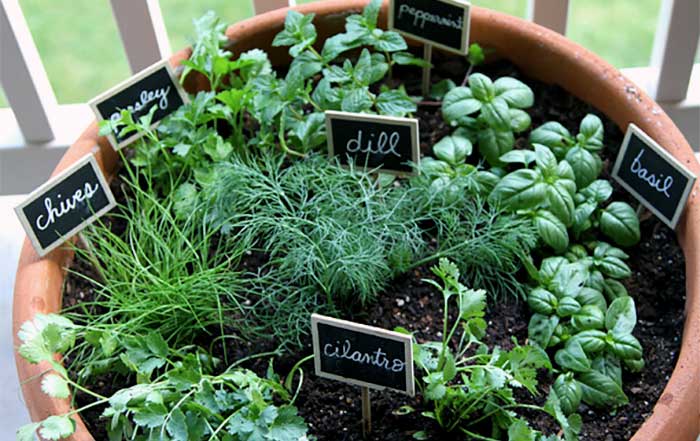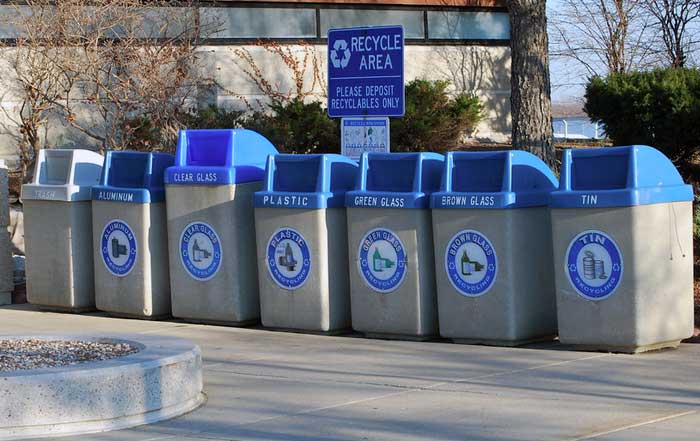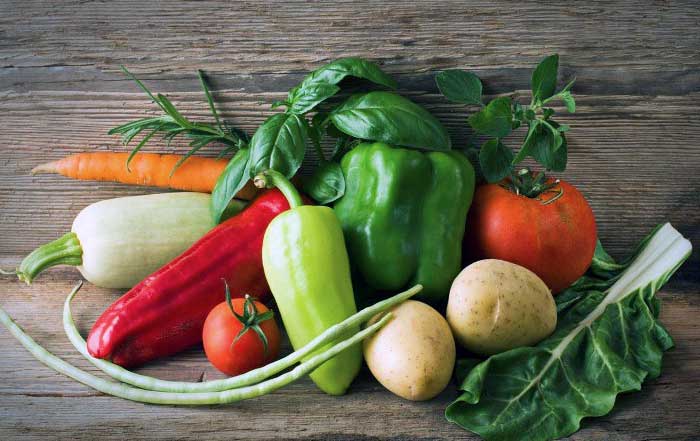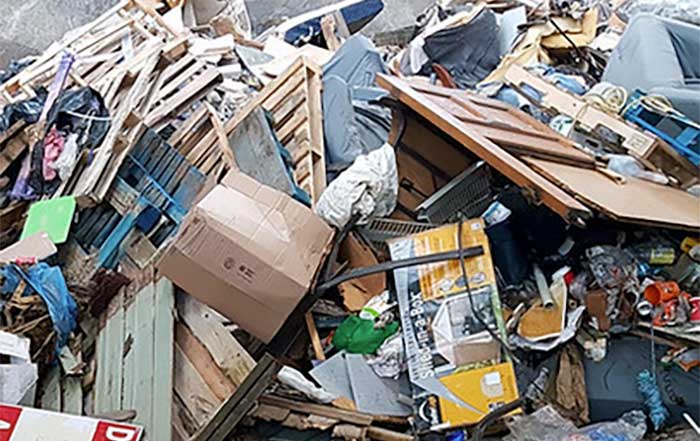A new chapter in sustainable living is unfolding as more individuals across the globe embrace the practice of growing their own food at home. This trend is not limited to rural households or those with expansive gardens; it is spreading rapidly through cities, apartments, and suburban areas where people are discovering the profound benefits of cultivating fruit, vegetables, salads, and herbs within their own spaces. The driving forces include rising food costs, heightened awareness of environmental sustainability, and the desire for healthier, fresher, and more nutrient-rich produce.
Home gardening is no longer seen merely as a hobby but as a strategy for resilience, a way to reduce dependence on industrial agriculture, and a contribution to a zero-waste and plastic-free future. With tools, knowledge, and technologies more accessible than ever, individuals in regions as diverse as the United States, Germany, Singapore, and South Africa are transforming their balconies, rooftops, and backyards into thriving micro-farms. Platforms like eco-natur.com/sustainable-living are inspiring this shift by showing that sustainable practices can begin at home with even the smallest step, such as planting a pot of herbs on a windowsill.
This article provides an in-depth exploration of how to grow fruits, vegetables, salads, and herbs at home in 2025, offering both practical strategies and an analysis of the broader economic, environmental, and social implications. It emphasizes experience, expertise, authoritativeness, and trustworthiness, ensuring readers gain actionable insights for their own journey toward self-sufficiency and ecological responsibility.
The Benefits of Home Gardening
Health and Nutrition Advantages
Home-grown produce is inherently fresher, often harvested just minutes before consumption, retaining maximum vitamins, minerals, and antioxidants. Unlike commercially transported produce, which can spend days in storage and transit, fruits and vegetables grown at home maintain superior nutritional value. Families in Canada, for example, are reporting reduced reliance on processed foods after incorporating home-grown salads into daily meals. Fresh herbs like basil and cilantro add not only flavor but medicinal benefits, contributing to holistic health that aligns with the principles of eco-natur.com/health.
Environmental Impact
Growing food at home significantly reduces carbon emissions associated with transport, packaging, and storage in industrial supply chains. By cultivating even a small garden, households participate in sustainable business models that emphasize localized, decentralized production. This aligns with the principles of eco-natur.com/recycling and eco-natur.com/zero-waste, since food scraps can be composted to create fertile soil, closing the loop in household ecosystems.
Economic and Lifestyle Benefits
With inflation affecting food prices across Europe, Asia, and the United States, growing food at home represents a form of economic empowerment. Households save money by reducing grocery bills, while also gaining a lifestyle upgrade by reconnecting with nature. Studies show that gardening reduces stress, promotes physical activity, and fosters family bonding. Many urban dwellers in Tokyo and New York are discovering gardening as both a therapeutic and financially beneficial practice, linking it to the lifestyle themes on eco-natur.com/lifestyle.
Essential Principles for Home Food Cultivation
Choosing the Right Location
Location determines success in home gardening. Sunlight exposure, airflow, and access to water are critical. Balconies, rooftops, and even vertical walls can be transformed into productive spaces. For example, Singapore has pioneered vertical gardening in compact apartments, showing how limited square footage can still yield abundant harvests. Home gardeners are advised to study the sunlight patterns of their chosen areas to ensure at least six hours of direct or filtered light for most vegetables and fruits.
Soil, Containers, and Hydroponics
Traditional soil-based gardening remains effective, but urban gardeners often rely on containers, raised beds, or hydroponic systems. Containers allow flexibility and are ideal for patios and rooftops. Hydroponics, a soilless method that uses nutrient-rich water, is gaining traction in Denmark and Netherlands, countries where urban density challenges traditional gardening methods. Whether soil or hydroponics, proper drainage and nutrient balance are essential for plant health.
Water Management
Water scarcity is a global concern, and home gardening must adopt responsible water use practices. Drip irrigation, self-watering pots, and rainwater harvesting reduce waste while ensuring consistent hydration. Households in Australia and South Africa—both regions with histories of drought—demonstrate leadership in water conservation practices. These innovations not only conserve resources but also align with the sustainable priorities of eco-natur.com/sustainability.
Fruits to Grow at Home
Berries: Strawberries, Blueberries, and Raspberries
Berries are compact, nutrient-dense, and well-suited for container gardening. Strawberries thrive in hanging baskets, while blueberries prefer slightly acidic soil, easily managed in pots. In Germany and Canada, balcony-grown raspberries are increasingly popular, offering a sweet, antioxidant-rich harvest. Their versatility makes them perfect for salads, desserts, and healthy snacks.
Citrus Fruits
Lemons, limes, and oranges are ideal for container cultivation. Dwarf varieties adapt well to patios or indoor spaces with sufficient sunlight. Citrus fruits not only provide Vitamin C but also enhance household biodiversity by attracting pollinators when grown outdoors. Mediterranean nations such as Spain and Italy are leading in container citrus gardening, blending tradition with modern space-saving methods.
Tropical Fruits in Containers
In warmer climates like Thailand and Brazil, tropical fruits such as papayas, bananas, and pineapples can be grown in home gardens. These species require more space and sunlight but reward households with exotic produce. With indoor grow lights, even cooler regions like Finland are experimenting successfully with tropical indoor cultivation.
Vegetables for Home Gardens
Leafy Greens
Spinach, kale, lettuce, and Swiss chard are some of the most rewarding vegetables to grow at home. They grow quickly, require minimal maintenance, and can be harvested continuously by trimming outer leaves. Urban households in London and Paris are incorporating leafy greens into compact hydroponic towers, ensuring a steady supply of fresh salads throughout the year.
Root Vegetables
Carrots, radishes, and beets thrive in deep containers with loose, nutrient-rich soil. These crops provide significant nutritional benefits while remaining relatively low maintenance. In South Korea and Japan, compact root vegetables are popular among apartment gardeners who rely on containers and raised beds.
Tomatoes and Peppers
Tomatoes and peppers are considered staples of home gardening. With dwarf or cherry varieties, they adapt perfectly to balcony pots or rooftop beds. In United States cities such as Los Angeles and Chicago, tomatoes are the most common urban garden crop due to their adaptability and high yield. Peppers, ranging from sweet bell peppers to spicy chilies, thrive in similar conditions, enriching home diets with both flavor and variety.
🌱 Home Garden Planting Calendar
Plan your year-round growing schedule
Leafy Greens
Spinach, kale, lettuce, arugula
Tomatoes
Cherry, beefsteak, heirloom varieties
Herbs
Basil, cilantro, parsley, thyme
Root Vegetables
Carrots, radishes, beets
Berries
Strawberries, blueberries, raspberries
Cucumbers
Climbing and bush varieties
🌡️Climate Note:Adjust planting times based on your local climate zone and frost dates
Salads and Fresh Greens
Microgreens
Microgreens, such as arugula, radish greens, and sunflower shoots, are among the fastest-growing crops, harvested within two weeks. They are nutrient-dense and perfect for indoor trays. In Norway and Sweden, where sunlight is limited in winter months, microgreens provide a reliable source of fresh vitamins year-round.
Cucumbers and Zucchini
Both cucumbers and zucchini are versatile and suitable for trellised growth in small spaces. They can climb vertical structures, maximizing productivity in minimal square footage. Home gardeners in France and Netherlands have perfected cucumber balcony cultivation, producing crisp, refreshing additions to salads and summer meals.
Mixed Salad Beds
Combining lettuces, arugula, and herbs in raised beds or containers creates diverse salad mixes. With staggered planting, households ensure continuous harvests. This approach resonates with modern sustainable living ideals promoted on eco-natur.com/organic-food, where food diversity supports both nutrition and resilience.
Herbs: The Cornerstone of Home Gardening
Mediterranean Herbs
Basil, oregano, thyme, and rosemary thrive in pots and require minimal care. Their aromatic qualities enhance not only food but also the sensory experience of gardening. Mediterranean countries like Italy and Greece have cultivated these herbs for centuries, and now urban households worldwide replicate these traditions indoors.
Asian Culinary Herbs
Cilantro, lemongrass, and mint are staples in Thailand, Vietnam, and Malaysia, where they flavor daily meals. These herbs adapt well to containers, making them accessible to international households seeking authentic cuisine. Mint, in particular, spreads vigorously and is best contained in separate pots to avoid overshadowing other plants.
Healing and Functional Herbs
Lavender, chamomile, and echinacea are valued not only for flavor but for their medicinal properties. Growing such herbs supports a holistic approach to well-being, resonating with eco-conscious communities emphasizing eco-natur.com/biodiversity.
Advanced Techniques for Maximizing Home Food Production
Vertical Gardening and Space Optimization
One of the most transformative methods in home food cultivation is vertical gardening. By growing upward rather than outward, households maximize limited space, making it possible for urban residents in New York, Berlin, and Tokyo to cultivate abundant produce on balconies and rooftops. Vertical planters, wall-mounted systems, and trellises allow crops such as cucumbers, beans, and tomatoes to flourish. This approach also improves air circulation, reduces pests, and creates visually appealing green walls that contribute to urban biodiversity. Vertical gardening aligns strongly with the principles of eco-natur.com/design, demonstrating that sustainability and aesthetics can coexist seamlessly.
Hydroponics, Aeroponics, and Aquaponics
Technological innovations are redefining what is possible in urban gardening. Hydroponic systems, where plants grow in nutrient-rich water instead of soil, are being widely adopted in Singapore and Netherlands, two countries that have become global leaders in urban agriculture. Aeroponics takes this further, misting roots with nutrient solutions in a soil-free environment, offering high yields with minimal water use. Aquaponics combines hydroponics with aquaculture, using fish waste to fertilize plants while the plants naturally purify the water. This closed-loop system mirrors the circular economy ideals emphasized by organizations like the Ellen MacArthur Foundation, and resonates with the sustainability ethos of eco-natur.com/sustainable-business.
Smart Gardening Tools
With the rise of smart technology, home gardening now integrates data-driven tools. Smart sensors monitor soil moisture, nutrient levels, and sunlight exposure, alerting gardeners via smartphone apps when plants require care. Automated irrigation systems optimize water use, while AI-powered apps provide guidance on crop selection and pest control. In South Korea and Japan, where technology adoption is high, households are increasingly relying on these tools to ensure successful yields. This represents the merging of traditional cultivation with digital innovation, redefining what sustainability means in a connected world.
Composting and Soil Regeneration
Closing the Loop with Food Waste
Composting is a cornerstone of sustainable home gardening, transforming kitchen scraps and yard waste into nutrient-rich soil. Instead of sending organic waste to landfills, households create a closed-loop system that reduces methane emissions while enriching their gardens. Communities in Sweden and Norway are pioneers in promoting composting at both household and municipal levels, reinforcing the value of responsible waste management. The philosophy aligns directly with the vision of eco-natur.com/recycling and eco-natur.com/zero-waste.
Types of Composting Systems
Traditional Composting: A backyard compost pile or bin where organic waste decomposes naturally over time.
Vermicomposting: The use of worms to accelerate decomposition, producing nutrient-dense worm castings. Popular in compact urban households in London and Toronto, vermicomposting is efficient and space-saving.
Bokashi Composting: A Japanese method using fermentation to break down food waste, including meat and dairy, which are typically excluded from traditional composting. This technique is gaining traction globally due to its ability to process diverse waste streams quickly.
Soil Health and Regenerative Practices
Healthy soil is the foundation of productive gardening. Incorporating compost, rotating crops, and using cover crops helps regenerate soil, restore nutrients, and increase microbial activity. France and Italy have long traditions of organic farming that emphasize soil health, and these principles are now being applied at household levels worldwide. For eco-conscious families, healthy soil represents not just fertility but resilience in the face of climate disruptions.
Renewable Energy Integration in Home Gardening
Solar-Powered Systems
Sustainability-minded households are increasingly integrating renewable energy into gardening. Solar panels power irrigation systems, grow lights, and climate control in greenhouses, reducing reliance on fossil fuels. In Australia and California, solar gardening kits are available to households, democratizing access to energy-efficient cultivation. This reflects the core message of eco-natur.com/renewable-energy, where renewable sources empower communities to achieve autonomy and resilience.
Rainwater Harvesting
Rainwater collection systems, paired with solar pumps, create self-sufficient irrigation solutions. Countries like India and South Africa, where water scarcity is acute, demonstrate how households can sustainably manage their gardens while conserving precious water resources. These practices exemplify how environmental stewardship can be embedded in daily life.
Indoor Grow Lights and Energy Efficiency
For households in colder regions such as Finland and Canada, LED grow lights powered by renewable energy enable year-round food cultivation. Advances in energy efficiency mean these systems consume minimal power, making indoor gardening both practical and sustainable.
Biodiversity and Wildlife Support
Gardens as Ecosystems
Home gardens do more than produce food; they create habitats for pollinators and beneficial insects. By planting flowers alongside crops, households attract bees, butterflies, and ladybugs, which play critical roles in pollination and pest control. This contributes to biodiversity, a theme central to eco-natur.com/wildlife and eco-natur.com/biodiversity. In United Kingdom, initiatives like Wildlife Trusts encourage households to cultivate gardens that sustain local ecosystems.
Companion Planting
Planting crops in combinations that support one another reduces pests and enhances yields. For example, marigolds deter nematodes when planted alongside tomatoes, while basil improves tomato growth and flavor. Companion planting is an ancient practice, now rediscovered as a modern sustainability tool. In Mexico and South America, the traditional “Three Sisters” system of corn, beans, and squash exemplifies this synergy.
Reducing Chemical Use
By fostering biodiversity, households reduce the need for chemical pesticides and fertilizers. Natural ecosystems balance themselves, resulting in healthier crops and safer food for families. This not only improves sustainability but ensures households contribute positively to the larger environmental picture.
The Global Economic and Social Implications
Food Security and Resilience
In 2025, geopolitical tensions, climate change, and supply chain disruptions highlight the importance of local food resilience. Home gardening provides households with autonomy, reducing reliance on volatile markets. In regions like Africa and South America, community-led home gardening initiatives are addressing food insecurity while empowering families. By cultivating food at home, households become active participants in strengthening their local and global economy, resonating with themes on eco-natur.com/economy.
Sustainable Business Opportunities
The rise of home gardening has sparked a growing market for seeds, tools, and smart gardening systems. Companies across Europe and Asia are innovating with eco-friendly planters, compost kits, and renewable energy integrations. This represents not only a consumer trend but also a significant opportunity for sustainable businesses that align with eco-conscious values. Learn more about sustainable business practices and their role in shaping the future economy.
Cultural Shifts Toward Sustainability
From urban rooftop gardens in Paris to suburban backyard farms in Texas, a cultural transformation is underway. Households no longer see gardening as a pastime but as a responsibility. It strengthens community ties, improves mental health, and aligns with the shared global mission of reducing humanity’s ecological footprint. This cultural evolution connects directly to the broader discussions on eco-natur.com/global.
Regional Approaches to Home Food Cultivation
United States and Canada: Suburban Yards and Urban Rooftops
In North America, the movement to grow fruits, vegetables, salads, and herbs at home has reached unprecedented scale. In suburban areas of the United States and Canada, backyard gardens are once again becoming food-producing zones, often blending traditional raised beds with modern composting and drip irrigation systems. Many households are adopting permaculture-inspired designs, creating self-sustaining mini-ecosystems where chickens provide manure, compost nourishes soil, and rainwater harvesting ensures irrigation.
Urban areas such as New York City, Toronto, and Chicago are also experiencing a boom in rooftop gardens. Local governments increasingly support these efforts through tax incentives and grants, recognizing their role in improving air quality, reducing heat islands, and enhancing food security. This resurgence has placed home gardening at the heart of discussions on sustainable living and urban planning.
United Kingdom and Western Europe: Tradition Meets Innovation
In the United Kingdom, allotment gardens remain deeply rooted in culture, but new innovations are reshaping the landscape. Compact hydroponic kits are now commonplace in London apartments, enabling residents to grow fresh greens and herbs indoors throughout the year. In Germany, the “Kleingarten” tradition—small community garden plots—has modernized with sustainable infrastructure like solar irrigation pumps and rainwater harvesting tanks.
France, Italy, and Spain combine traditional culinary gardening with modern methods, cultivating Mediterranean herbs, citrus fruits, and leafy greens for daily cooking. These countries emphasize biodiversity and climate resilience, ensuring gardens are both productive and environmentally restorative. By marrying tradition with cutting-edge technology, Europe is redefining the role of food cultivation in everyday life.
Scandinavia: Overcoming Harsh Climates
In Sweden, Norway, Finland, and Denmark, the short growing seasons once posed challenges to home food cultivation. However, the adoption of greenhouses, geothermal heating, and energy-efficient LED grow lights has revolutionized the region’s capacity for year-round gardening. Indoor hydroponic gardens, powered by renewable energy, allow families to enjoy fresh vegetables even during long winters.
These countries also emphasize sustainability, with households engaging in composting, seed-saving, and biodiversity-friendly gardening. Scandinavian models are admired worldwide for integrating modern energy solutions with ecological stewardship, reflecting principles of eco-natur.com/renewable-energy and eco-natur.com/biodiversity.
Asia: Innovation Driven by Population Density
Asia’s dense urban centers have sparked pioneering solutions in home gardening. In Singapore, vertical hydroponic farms are built into apartments, while in Japan, indoor smart gardens powered by AI are transforming kitchens into productive micro-farms. South Korea is witnessing rapid adoption of automated growing systems, marketed as lifestyle upgrades that align with tech-savvy cultures.
Meanwhile, in Thailand, Vietnam, and Malaysia, traditional food gardens thrive in rural households, with emphasis on herbs, tropical fruits, and medicinal plants. These practices not only enhance food security but also maintain cultural heritage. Asia demonstrates that innovation and tradition can work hand in hand to create resilient food systems.
Africa: Community-Led Solutions for Resilience
In South Africa, urban households are increasingly turning to home gardens to counter rising food costs and supply chain disruptions. Community gardens and seed-exchange networks empower families, while water-efficient techniques like drip irrigation and mulching combat the effects of drought.
Across Africa, NGOs and local organizations support household farming initiatives, equipping families with knowledge and tools to grow vegetables and herbs. These efforts improve nutrition, reduce dependence on imported goods, and foster self-reliance, directly aligning with the principles of eco-natur.com/economy.
Latin America: Food and Culture Intertwined
In Brazil, Mexico, and across South America, home gardening remains both a cultural practice and a necessity. Families often integrate fruit trees like papaya, mango, and avocado into their backyards, creating diverse edible landscapes. Traditional methods such as the “milpa” in Mexico—growing corn, beans, and squash together—are being revived with a focus on biodiversity and climate resilience.
Urban households in cities like São Paulo and Buenos Aires are also embracing hydroponics and rooftop gardening, showing that Latin America is innovating while staying true to its agricultural heritage.
Practical Step-by-Step Guide for Beginners
Step 1: Planning and Design
The first step in starting a home garden is assessing available space, sunlight exposure, and climate conditions. Households should begin with easy crops such as leafy greens, herbs, and cherry tomatoes before expanding to more complex fruits and root vegetables. Creating a garden design that includes vertical structures, container arrangements, or raised beds ensures efficient use of space.
Step 2: Choosing Crops
Selecting crops suited to local climates and household needs is essential. In colder climates, focus on indoor-friendly crops like microgreens and herbs. In tropical regions, incorporate fruiting plants like papayas and bananas. For households with limited space, prioritize versatile crops such as lettuce, spinach, and peppers that can be grown in compact containers.
Step 3: Soil and Fertility
Healthy soil is the foundation of any garden. Use compost, organic fertilizers, and natural amendments to enrich soil. Container gardeners can purchase organic potting mixes designed for vegetables and fruits, ensuring optimal nutrition and drainage.
Step 4: Watering and Irrigation
Install efficient watering systems, such as drip irrigation or self-watering pots. Collecting rainwater in barrels reduces reliance on municipal water systems, aligning with sustainable practices promoted by eco-natur.com/sustainability.
Step 5: Planting and Maintenance
Follow recommended planting depths and spacing to maximize yields. Regular pruning, staking, and mulching improve plant health and productivity. Monitor for pests using natural solutions such as neem oil, companion planting, or biological controls like ladybugs.
Step 6: Harvesting and Storage
Harvest crops at their peak for maximum flavor and nutrition. Many leafy greens can be harvested continuously by trimming outer leaves. Invest in storage solutions such as breathable produce bags or refrigeration to extend freshness. Surplus produce can be preserved through freezing, drying, or pickling.
Inspiring Case Studies
Rooftop Gardens in New York City
In New York, thousands of families and small businesses are cultivating rooftop gardens that supply fresh produce to local communities. Some households sell surplus harvests to restaurants, turning gardening into a micro-enterprise. This demonstrates how home gardening integrates with broader concepts of eco-natur.com/sustainable-business.
Berlin’s Community Composting Movement
In Germany, community composting centers collect household organic waste and redistribute compost to local gardeners. Families actively participate in the cycle, reducing landfill contributions and enriching their gardens. This model shows the importance of integrating individual efforts into community ecosystems.
Tokyo’s Vertical Farming Apartments
In Tokyo, innovative apartment complexes integrate vertical farms into shared spaces, providing residents with fresh vegetables. These projects illustrate how urban design can promote sustainable living while addressing population density challenges.
The Future of Home Food Cultivation
Climate Change and the Role of Home Gardens
By 2025, the accelerating impacts of climate change—ranging from unpredictable weather to prolonged droughts—are pushing governments, communities, and individuals to rethink food systems. Home gardening plays a vital role in building resilience. When households grow fruits, vegetables, salads, and herbs, they reduce dependence on long supply chains that are vulnerable to disruption from extreme weather events, geopolitical conflicts, or transportation breakdowns.
For example, in Australia, where wildfires and droughts often threaten agriculture, urban residents are increasingly turning to water-efficient gardens and permaculture designs to safeguard their food supply. In California, rooftop greenhouses powered by renewable energy are becoming a defense against rising temperatures and soil degradation. These efforts contribute to climate adaptation strategies while advancing goals aligned with eco-natur.com/sustainability.
Integrating Home Gardening with National Policies
Governments worldwide are recognizing the strategic value of household food cultivation. Municipalities in Germany, Singapore, and Canada provide subsidies for compost bins, rainwater harvesting systems, and vertical farming kits. In South Korea, public-private partnerships encourage urban dwellers to adopt smart gardening systems as part of the country’s Green New Deal.
These policies not only strengthen food security but also encourage citizens to become active contributors to environmental stewardship. They highlight the interconnectedness of personal action with national and global sustainability agendas, reinforcing themes discussed on eco-natur.com/global.
Digital Communities and Knowledge Sharing
The digital era has made knowledge about gardening more accessible than ever. Online platforms, social media groups, and sustainability-focused websites provide tutorials, troubleshooting advice, and inspiration. Families in South Africa can now share their successes in drought-resistant gardening with peers in Spain or Thailand, fostering a sense of global solidarity.
Digital platforms also host marketplaces for seeds, compost kits, and eco-friendly gardening tools, fueling a sustainable business ecosystem. eco-natur.com itself functions as a hub for knowledge, guidance, and community, empowering individuals to translate principles of sustainable living into daily practice.
Economic and Business Implications
Expanding Markets for Eco-Friendly Products
As more households embrace home gardening, demand for eco-friendly products continues to rise. Businesses offering biodegradable pots, organic fertilizers, and energy-efficient grow lights are thriving. Companies in Netherlands and Switzerland are particularly active in exporting innovative gardening solutions, from automated irrigation systems to modular hydroponic towers.
The growth of this market reflects the broader shift toward responsible consumption and aligns directly with eco-natur.com/sustainable-business. Entrepreneurs worldwide are seizing opportunities to serve eco-conscious consumers who seek to align their purchases with their values.
Impact on Local Economies
Home gardening not only benefits households but also stimulates local economies. Farmers’ markets increasingly feature surplus produce from household gardens. Community-supported agriculture (CSA) models are being adapted for urban settings, where neighborhoods pool resources and share harvests. In France and Italy, home gardeners are forming cooperatives, selling herbs, honey, and preserved foods to nearby communities.
This localized economic activity reduces reliance on global supply chains, strengthens food sovereignty, and contributes to resilience during crises, echoing the themes explored in eco-natur.com/economy.
From Hobby to Professional Pathways
For some households, gardening evolves from a lifestyle choice into a career path. Individuals passionate about cultivation often transition into professional horticulture, sustainable landscape design, or eco-friendly business ventures. Training programs and online certifications now offer pathways to transform home gardening skills into formal qualifications. This career shift underscores how sustainability can inspire new livelihoods and redefine the meaning of work.
Social and Cultural Dimensions
Strengthening Family and Community Bonds
Gardening fosters intergenerational connections, with grandparents sharing traditional knowledge and children learning responsibility by nurturing plants. In Canada and United Kingdom, school programs integrate gardening into curricula, teaching students about nutrition, biodiversity, and sustainability. These initiatives reflect the growing recognition of gardening’s role in education and community resilience.
Neighborhood gardens also strengthen social cohesion. Shared spaces in Spain, Brazil, and South Africa become hubs where families collaborate, exchange produce, and celebrate cultural traditions linked to food.
Well-being and Mental Health
The therapeutic benefits of gardening are widely documented. By engaging with soil, plants, and natural cycles, individuals experience reduced stress, improved mood, and enhanced physical activity. In post-pandemic societies, these benefits are particularly valued, as more people seek balance and wellness in everyday life.
Gardening aligns directly with holistic living principles promoted by eco-natur.com/health, where well-being is understood as a balance of physical, mental, and ecological health.
Preserving Cultural Food Traditions
Home gardening also plays a role in preserving cultural heritage. Families grow traditional herbs, spices, and vegetables that may not be readily available in supermarkets. In immigrant households across United States, growing chilies, coriander, or bitter melon connects families to their culinary roots. This preservation of food culture contributes to global diversity and enriches local communities with shared traditions.
Looking Ahead: The Next Decade of Home Gardening
Urban Agriculture as Infrastructure
By 2035, experts predict that urban agriculture—including home gardening—will be fully integrated into city infrastructure. Rooftops, walls, and unused public spaces will be designed to support food cultivation, reducing dependence on external food sources. Cities like Singapore and Amsterdam are already leading this transformation, positioning urban agriculture as essential to sustainable city planning.
Integration with Renewable Energy and Smart Homes
Home gardens will increasingly merge with smart home ecosystems. Solar-powered grow lights, AI-driven irrigation systems, and automated composters will become standard features in eco-friendly homes. Integration with renewable energy sources ensures that food cultivation remains both efficient and sustainable, reducing environmental footprints while empowering households.
Contribution to Climate Solutions
As the global community intensifies efforts to combat climate change, home gardening will continue to serve as a practical, localized solution. Collectively, millions of households reducing food waste, conserving water, and cutting carbon emissions represent a powerful force for planetary change. This contribution complements international agreements while grounding sustainability in the daily lives of ordinary people.
Conclusion: Home Gardening as a Global Movement
Growing fruits, vegetables, salads, and herbs at home is more than an agricultural practice—it is a declaration of independence, sustainability, and hope. From balconies in Tokyo to backyards in Texas, from rooftops in Berlin to courtyards in São Paulo, individuals are transforming their lives and communities by cultivating their own food.
This movement embodies the values at the heart of eco-natur.com/sustainable-living: resilience, responsibility, and respect for the planet. It enhances health, supports biodiversity, strengthens local economies, and prepares societies for the challenges of an uncertain future.
As the world looks ahead, the humble act of planting a seed becomes a powerful symbol of renewal. Every home garden, no matter how small, is part of a larger global ecosystem, shaping a sustainable and equitable tomorrow.








